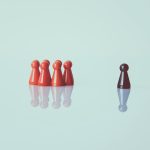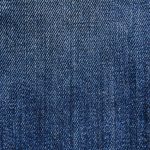Looking to handle the heat like a pro? When it comes to fabrics that can withstand high temperatures, you need the right materials in your arsenal.
From the classic reliability of cotton and the rugged resilience of denim to the advanced protection of Kevlar and aramid, there's a wide array of options to choose from.
In this guide, you'll discover the top 10 fabrics that stand up to heat with confidence. Whether you're crafting protective gear or seeking heat-resistant clothing, mastering the properties of these fabrics will give you the edge you need.
So, let's dive in and explore the best heat-resistant fabrics for your next project.
Key Takeaways
- Cotton, linen, and wool are natural fabrics that can withstand heat and have moisture-wicking properties.
- Kevlar, Nomex, carbon fiber, and aramid are synthetic fabrics that offer reliable protection against flames and extreme heat.
- Denim and leather are specialty fabrics that provide exceptional durability in high-heat settings.
- Kevlar, Nomex, and carbon fiber are performance fabrics commonly used in industries such as aerospace, military, automotive, and industrial settings.
Cotton
You should consider using a tightly woven cotton fabric to withstand heat, as it's known for its durability and heat resistance. Cotton is a natural fiber that possesses excellent heat resistance, making it a great choice for high-temperature environments.
Its breathable fabric allows for air circulation, which helps in regulating body temperature and keeping you cool in hot conditions. Additionally, cotton has moisture-wicking properties, meaning it can absorb and draw moisture away from the body, keeping you dry and comfortable.
These properties make cotton an ideal fabric for withstanding heat, whether you're working in a hot kitchen, spending time in the sun, or engaging in physical activities. When selecting cotton for heat resistance, look for tightly woven cotton materials that provide better insulation and protection from heat.
With its combination of heat resistance, breathability, and moisture-wicking properties, cotton stands out as a reliable and comfortable fabric choice for withstanding high temperatures.
Linen
What other fabric, besides cotton, can withstand heat and provide comfort in high-temperature environments? Linen is the answer. Its unique properties make it an excellent choice for withstanding heat while ensuring comfort.
Here are some key properties and care instructions for linen:
- Breathable: Linen's natural fibers allow for excellent airflow, keeping you cool and dry in hot conditions.
- Heat resistance: Linen can withstand high temperatures, making it ideal for hot and humid climates.
- Moisture-wicking: It effectively absorbs moisture, keeping you feeling fresh and comfortable even in the heat.
- Durable: Linen is a strong fabric that can withstand repeated washings, making it a long-lasting choice.
- Care instructions: To maintain linen's properties, wash it in cool or lukewarm water and avoid over-drying to prevent excessive wrinkling.
Understanding these properties and care instructions will help you make the most of linen's heat-resisting capabilities, ensuring you stay comfortable in warm environments.
Whether you're looking for breathable clothing for a tropical vacation or durable linens for a hot summer, linen is the fabric that can meet your needs.
Denim
Discussing denim's ability to withstand heat, consider the fabric's unique properties and care instructions to ensure comfort and durability in high-temperature environments.
Denim is renowned for its exceptional durability, making it a popular choice for high-heat settings. The tightly woven cotton twill fabric not only offers a rugged and sturdy construction but also boasts heat-resistant qualities. Its sturdy nature allows denim to maintain its integrity even in the face of high temperatures, making it a reliable option for enduring heat exposure.
In addition to its heat resistance, denim's timeless appeal in fashion trends further solidifies its position as a go-to fabric for enduring high temperatures. The fabric's versatility and ability to withstand the test of time have cemented its status as a wardrobe staple, ensuring that denim garments remain a popular choice for individuals seeking both style and durability in warm climates.
To maintain denim's durability and heat-resistance, it's crucial to adhere to specific care instructions. Avoid exposing denim to excessive heat during washing and drying, as this can compromise its heat-resistant properties. By following proper care guidelines, denim can continue to offer comfort and durability even in high-temperature conditions.
Wool
Having explored denim's heat-resistant properties, transitioning to wool, a natural fiber known for its insulating qualities, offers a versatile option for enduring high temperatures. Wool insulation is highly effective in regulating body temperature, making it an excellent choice for both cold and warm climates.
When it comes to withstanding heat, wool's properties make it a standout fabric:
- Moisture-wicking: Wool has the ability to wick away moisture from the body, keeping you dry and comfortable even in hot conditions.
- Breathability: Its natural breathability allows for air circulation, preventing overheating and sweat buildup.
- UV protection: Wool provides some degree of protection against harmful UV rays, reducing the risk of sunburn in sunny, high-temperature environments.
- Odor resistance: Wool's natural odor-resistant properties keep you feeling fresh, even when exposed to heat and humidity.
- Durability: Wool is a durable fabric that can withstand high temperatures without compromising its integrity, ensuring longevity and reliable performance.
When it comes to enduring heat, wool proves to be an exceptional choice due to its unique combination of insulating, moisture-wicking, and breathable properties.
Kevlar
You can rely on Kevlar for exceptional heat resistance due to its remarkable strength and thermal stability. Kevlar is a synthetic aramid fiber known for its incredible tensile strength and heat resistance, making it a top choice for applications requiring protection from high temperatures. Its outstanding properties have made Kevlar a key material in a wide range of industries, including aerospace, military, automotive, and industrial settings.
One of the most notable Kevlar properties is its ability to withstand high temperatures without compromising its structural integrity. This makes it ideal for use in protective gear, such as heat-resistant gloves, firefighting suits, and insulation for hot pipes and hoses. Additionally, Kevlar's exceptional strength-to-weight ratio has led to its widespread use in ballistic protection, ropes and cables, and even in high-performance sporting equipment like racing sails and motorcycle gear.
Nomex
When selecting heat-resistant fabrics, consider Nomex for its proven performance in high-temperature environments. Nomex stands out for its exceptional chemical resistance and flame retardant properties, making it a top choice for various applications where exposure to extreme heat and hazardous chemicals is a concern.
Here's why Nomex should be on your radar:
- Reliable Protection: Nomex offers reliable protection against flames and extreme heat, providing peace of mind in high-risk environments.
- Durability: Its robust construction ensures durability, allowing the fabric to maintain its integrity even under prolonged exposure to intense heat.
- Versatility: Nomex is incredibly versatile, suitable for a wide range of industries and applications where protection from heat and chemicals is paramount.
- Comfort: Despite its impressive heat-resistant properties, Nomex is designed to provide comfort, ensuring that protective clothing made from this fabric remains wearable even in challenging conditions.
- Proven Performance: With a track record of proven performance in demanding environments, Nomex has earned its reputation as a reliable and effective heat-resistant fabric.
Nomex's combination of chemical resistance and flame retardant properties makes it an indispensable material for professionals who prioritize safety and reliability in high-temperature settings.
Leather
While leather is often associated with fashion and accessories, it also serves as a heat-resistant fabric with a wide range of practical applications. Leather can withstand heat due to its natural properties, making it a durable and reliable material for various uses.
When it comes to leather care tips, it's essential to keep it away from direct sunlight and heat sources to prevent drying and cracking. Conditioning the leather regularly with specialized products can help maintain its heat-resistant qualities and overall longevity.
In terms of leather fashion trends, incorporating leather into your wardrobe not only adds a touch of timeless style but also offers a certain level of heat resistance, making it a versatile choice for different climates.
For leather furniture maintenance, regularly dusting and gently cleaning with a damp cloth can help preserve its heat-resistant properties. Avoid placing leather furniture directly near heat sources to prevent damage.
When it comes to leather crafting techniques, knowing how to properly treat and work with leather is crucial for maintaining its heat resistance. Whether you're making protective gear or intricate leather goods, understanding the best practices for leather crafting is essential for ensuring its durability and heat-resistant qualities.
Carbon Fiber
If you're looking for a fabric that can handle high temperatures with ease, carbon fiber is a top contender.
Not only is it incredibly heat resistant, but it's also lightweight and durable, making it a popular choice in the aerospace industry.
Whether you're considering protective gear or industrial applications, carbon fiber's impressive qualities make it a standout option for withstanding heat.
High Heat Resistance
For high heat resistance, you should consider using carbon fiber as it offers exceptional durability and thermal stability. When it comes to high heat environments, carbon fiber is an excellent choice for various industrial applications and safety gear. Here are some reasons why carbon fiber is highly resistant to heat:
- Exceptional Durability: Carbon fiber can withstand high temperatures without degrading, ensuring long-lasting performance.
- Thermal Stability: It maintains its structural integrity even in extreme heat, providing reliable protection.
- Lightweight: Despite its strength, carbon fiber is remarkably lightweight, enhancing comfort and mobility.
- Corrosion Resistance: It resists corrosion in high heat environments, ensuring longevity and reliability.
- Versatility: Carbon fiber can be tailored to specific heat resistance requirements, making it adaptable to various applications.
Carbon fiber is undoubtedly a top contender for withstanding high heat, making it a go-to choice for demanding environments.
Lightweight and Durable
Carbon fiber offers outstanding heat resistance while remaining lightweight and durable, making it an ideal choice for various applications.
Its insulation properties and breathable construction make it a top contender for heat-resistant fabrics. The unique structure of carbon fiber provides excellent thermal insulation, allowing it to withstand high temperatures without compromising its integrity. This makes it perfect for use in environments where heat resistance is crucial.
Additionally, its lightweight nature ensures that it doesn't add unnecessary bulk or weight to the application, while still providing exceptional durability.
Whether used in aerospace, automotive, or sporting equipment, carbon fiber's ability to withstand heat while being lightweight and durable makes it a sought-after material for a wide range of heat-resistant applications.
Used in Aerospace Industry
With its outstanding heat resistance and lightweight durability, carbon fiber is frequently utilized in the aerospace industry for its exceptional ability to withstand high temperatures. When it comes to thermal protection and fire-resistant coatings, carbon fiber stands out as an indispensable material in the aerospace industry. Its unique properties make it an ideal choice for withstanding extreme heat and providing reliable protection in high-temperature environments.
Here's why carbon fiber is a top choice for aerospace applications:
- Exceptional strength-to-weight ratio
- Superior thermal conductivity
- Resistance to corrosion and chemical damage
- High fatigue resistance
- Ability to maintain structural integrity in extreme conditions
These qualities make carbon fiber an indispensable material for spacecraft, aircraft, and other aerospace applications, ensuring safety and performance in demanding thermal environments.
Aluminized Fabric
You can enhance your heat protection by considering aluminized fabric, which reflects radiant heat and provides a barrier against high temperatures. This type of fabric is commonly used in various applications where heat resistance is crucial, such as in protective clothing for firefighters, industrial workers, and proximity suits for those working near molten metals. Aluminized fabric is also utilized in insulation for high-temperature equipment, like furnaces and foundries.
| Aluminized Fabric Applications | Aluminized Fabric Properties |
|---|---|
| Protective clothing for firefighters | Reflects radiant heat |
| Industrial heat-resistant clothing | Provides a barrier against high temperatures |
| Proximity suits for workers near molten metals | Durable and long-lasting insulation |
Aluminized fabric's ability to reflect radiant heat and provide a barrier against high temperatures makes it a top choice for applications where heat protection is critical. Its durable and long-lasting insulation properties make it ideal for use in various industries, ensuring the safety and protection of workers in high-heat environments.
Aramid
Reflecting radiant heat and providing a strong barrier against high temperatures, aramid fabrics are commonly used in protective gear for firefighters and industrial workers exposed to extreme heat. Aramid is a synthetic fiber known for its exceptional heat insulation and flame retardant properties, making it a popular choice in demanding environments where safety is paramount.
Here are some key points about aramid fabrics that make them stand out:
- Exceptional Heat Insulation: Aramid fabrics offer outstanding heat insulation, protecting the wearer from extreme temperatures and radiant heat, allowing them to work with confidence even in the most challenging conditions.
- Flame Retardant Properties: One of the most crucial aspects of aramid fabrics is their inherent flame retardant properties, providing a vital layer of protection against direct exposure to flames and heat sources.
- Durability: Aramid fabrics are incredibly durable, standing up to the rigors of demanding work environments and retaining their protective qualities over time.
- Lightweight Comfort: Despite their robust nature, aramid fabrics are surprisingly lightweight, ensuring that protective gear made from this material is comfortable to wear for extended periods.
- Versatility: Aramid fabrics are versatile, finding applications not only in protective clothing but also in diverse industries where heat resistance and durability are essential.
Frequently Asked Questions
Are There Any Specific Care Instructions for Maintaining the Heat Resistance of These Fabrics?
To maintain the heat resistance of these fabrics, follow specific care instructions. Proper fabric maintenance is crucial for preserving their protective properties. Always refer to the manufacturer's guidelines for washing, drying, and ironing to ensure longevity.
Can These Fabrics Be Used in High-Temperature Industrial Applications?
For high-temperature industrial applications, it's crucial to ensure fabrics meet performance requirements. Material testing and quality assurance are essential to guarantee safety and durability. Always prioritize fabrics that can withstand the demands of industrial use.
Are There Any Environmental Considerations When Using These Heat-Resistant Fabrics?
When using heat-resistant fabrics, it's crucial to consider the environmental impact. Look for sustainable options like organic cotton or hemp, which are biodegradable and require less water and pesticides, making them eco-friendly choices.
How Do the Costs of These Heat-Resistant Fabrics Compare to Traditional Fabrics?
When comparing the cost of heat-resistant fabrics to traditional ones, consider the durability assessment. Heat-resistant fabrics may have higher upfront costs, but their longevity and protection against heat damage can result in long-term savings.
Are There Any Specific Safety Guidelines for Working With These Heat-Resistant Fabrics?
When handling heat-resistant fabrics, it's crucial to follow safety precautions to ensure heat protection. Proper fabric handling and worker training are essential to prevent accidents. Always adhere to specific safety guidelines for working with these fabrics.
- The Complete Guide to Nonwoven Polypropylene Tote Bags - July 11, 2025
- What Is Hydrophilic vs. Hydrophobic Nonwoven Fabric? - July 11, 2025
- Is Nonwoven Fabric Breathable? An Important Factor for Masks and Apparel - July 11, 2025







